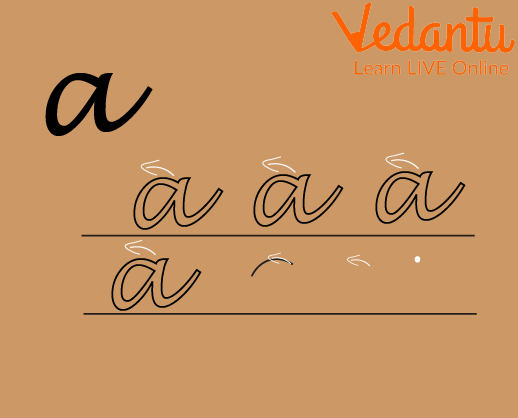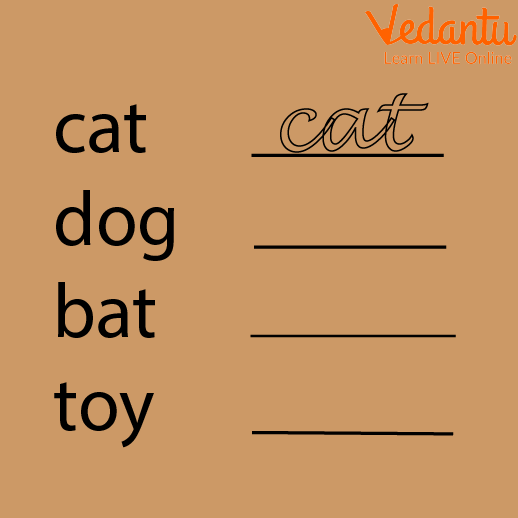




Top Writing Exercises to Spark Kids’ Imagination
Are you fond of writing? If so, what do you enjoy writing? Writing includes many things like, tracing, colouring and writing letters and words. It is common knowledge that writing makes topics easier to comprehend. Kids should therefore practice writing every day to develop their writing abilities.

Kid Practising Writing
Kids can practice writing on engaging worksheets. These worksheets will enable them to efficiently practice writing alphabets. Conduct writing activities for children to enhance their writing abilities for superior learning outcomes.
How Writing Helps Kids: Cursive Writing Worksheet
Now, a number of writing worksheets are present to provide kids in school, cursive writing worksheets provided in primary grades help kids to write English letters in cursive.
Kids' practice sheets for cursive writing are crucial for the development of their academic and foundational skills.
It encourages them to improve as writers. Kids' writing practice worksheets help them hone their fine motor abilities.
Kids are required to do practice sheets in cursive writing in kindergarten and preschool in order to develop their writing abilities. Additionally, there are printable practice sheets for children's cursive writing online. In addition, practising letter writing will improve children's ability to write the alphabet clearly.

Cursive Writing with Tracing
Writing Exercises
The following are some critical components of writing exercises for children:
Writing alphabet (from A to Z)
Writing letters in lowercase
Writing words and phrases
Practice Writing Letters to Children
Kids should start learning to recognize and correctly write letters at a young age. For their continued development and academic pursuits, it is crucial that they gain fundamental abilities. They can read and write the text more fluently as a result. In addition, for a better learning experience, kids should actively participate in games that teach letter recognition.
A Few Strategies for Letter Writing Practice:
Participate actively in games and activities that will help to learn and recognize the letters.
To learn how to distinguish letters, use colours, sand, sounds, songs, and flashcards.
Use a variety of worksheets to practice writing letters.

Writing Practice Sheet
Suggestions For Kids Writing Practice Sheets
Encourage children to read frequently.
Give kids writing tools like pencils and erasers so they can improve their handwriting.
Conduct a variety of writing exercises to get kids writing.
Give them writing exercises with the alphabet and word recognition.
Give kids worksheets connecting the dots so they can trace the lines and create an alphabet.
Encourage kids to write even if they make mistakes.
Use worksheets with a variety of vibrant themes and patterns to pique children's interests.
Give kids a suitable space to practice writing.
Give students the freedom to think and write on their own terms.
Encourage students to ask questions if they need clarification or if they have any questions.
As they write, pay attention to their concepts and ideas.
Whenever a kid writes something, be sure to acknowledge it.
Teach them the pronunciations and definitions of terms that they find challenging to comprehend.
Encourage them to write frequently so they can develop their writing abilities.
Summary
Writing is a vital method of communication that allows for the methodical exchange of ideas and perspectives. Kids begin learning to write at a young age in order to express themselves and communicate with others.
They can improve their spelling, grammar, sentence structure, and other skills by writing. Kids can effectively recognize and recite the alphabet before this by engaging in ABC writing exercise. Writing abilities take time to develop, but kids eventually learn to write and communicate. By experimenting with terms via practice, writing aids children in developing their vocabulary skills.
FAQs on Writing for Kids: Creative Ways to Build Strong Writers
1. What are some simple writing activities for young children just starting out?
For young beginners, it's best to start with activities that build foundational skills in a playful way. Some effective activities include:
- Tracing and Connecting Dots: Helps children get used to holding a pencil and forming basic shapes, lines, and curves.
- Sensory Writing: Let them draw letters in sand, salt, or shaving cream. This multi-sensory approach makes learning fun and memorable.
- Writing Their Name: A child's name is often the first word they learn to write. It gives them a sense of accomplishment and personal connection.
- Scribbling and Drawing: Encourage them to draw and then tell you a story about their picture. You can write down their words for them, showing the connection between spoken and written language.
2. How should parents introduce the concept of writing to a complete beginner?
To introduce writing, focus first on developing fine motor skills. Before a child can form letters, they need the hand strength and coordination to hold a pencil correctly. Start with activities like playing with dough, stringing beads, or using tweezers to pick up small objects. Then, move on to pre-writing strokes—practising drawing vertical lines, horizontal lines, circles, and slanting lines. Keep sessions short and fun, celebrating their effort rather than perfection.
3. What are some fun writing games that help improve a child's skills without feeling like homework?
Turning writing into a game is a great way to build skills. Here are a few fun ideas:
- Story Chain: One person starts a story with a single sentence, and each person adds the next sentence. This encourages creativity and sentence construction.
- Picture Prompts: Use an interesting picture from a magazine or a family photo and ask your child to write a short story or a few descriptive sentences about what is happening.
- Finish the Sentence: Write an incomplete sentence like, “If I had a superpower, I would…” and let your child complete it. This is a low-pressure way to practise writing.
4. My child can write individual letters but struggles to put them together to form words. What can I do?
This is a very common stage. The key is to help them understand how sounds connect to form words. You can try focusing on phonetic spelling, where you encourage them to write the sounds they hear, even if the spelling isn't perfect. Use magnetic letters or alphabet blocks to physically build simple three-letter words (like C-A-T). Start with words that are meaningful to them, such as 'mom', 'dad', or a pet's name. This helps them see writing as a tool for communication.
5. Why is reading so important for developing a child's writing abilities?
Reading and writing are deeply connected. When children read regularly, they naturally absorb the building blocks of good writing. Reading exposes them to new vocabulary, different ways of structuring sentences, and the rhythm of storytelling. It builds a mental library of ideas and examples they can draw from when they write. In simple terms, reading shows them what good writing looks and sounds like, making it easier for them to do it themselves.
6. How do writing expectations generally change as a child moves from Kindergarten to early Primary school?
The expectations progress logically. In Kindergarten (LKG/UKG), the main focus is on letter formation (both uppercase and lowercase) and recognising the sounds associated with them. The goal is mastery of the alphabet. As they move into early Primary school (Classes 1 and 2), the focus shifts to using those letters to write simple words and short sentences. They also begin to learn basic punctuation, like capital letters at the beginning of a sentence and full stops at the end.
7. What are some creative ways to encourage a reluctant child to write more often?
For a reluctant writer, the key is to make writing feel like a choice, not a chore. Try creating a special 'writing corner' with fun stationery, colourful pens, and different types of paper. Instead of asking them to 'write a story,' give them playful story prompts like, “What would your dog say if it could talk?” You can also try co-writing, where you take turns writing sentences. This shared activity removes pressure and makes the experience more about connection and fun.















